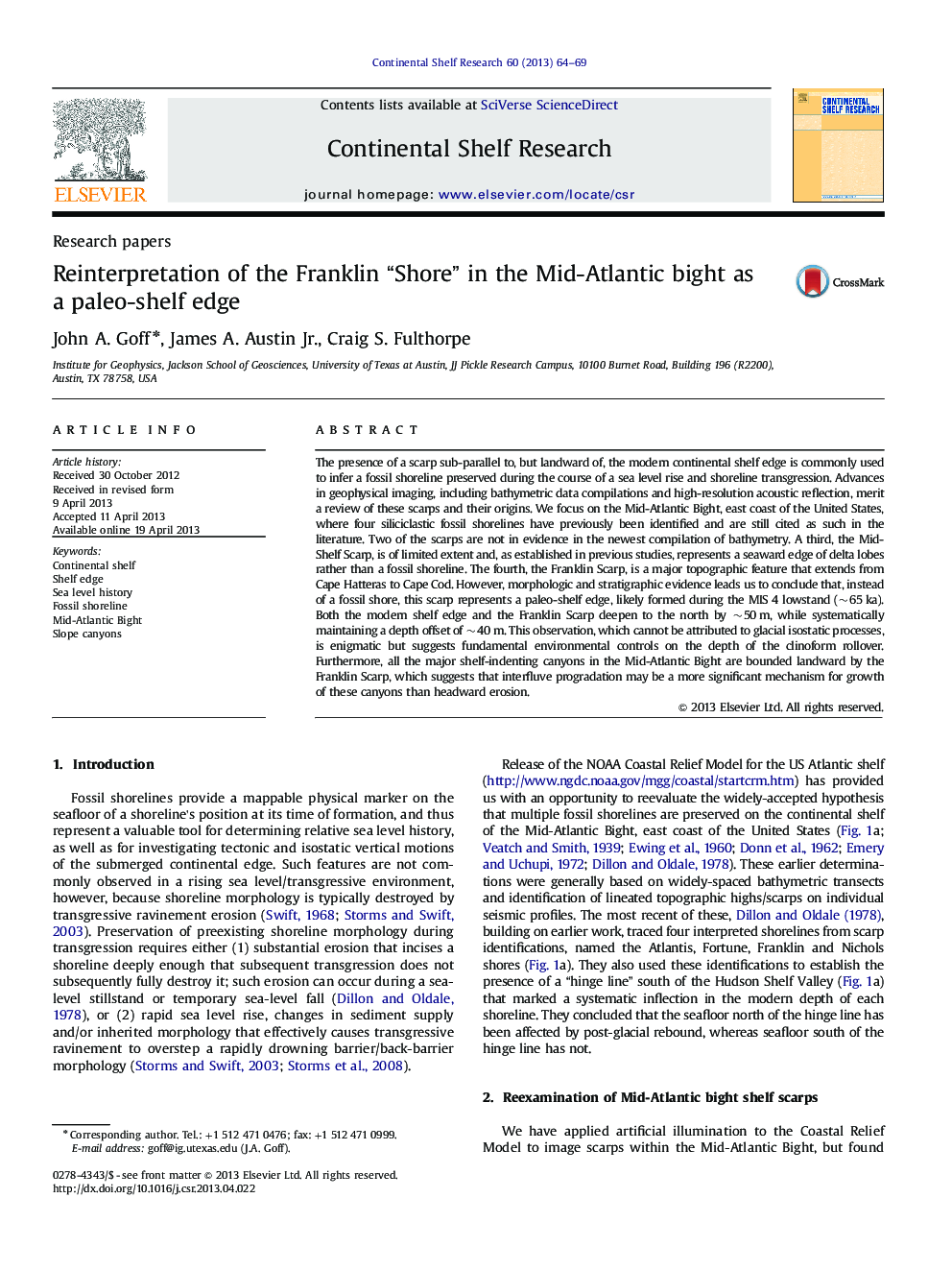| کد مقاله | کد نشریه | سال انتشار | مقاله انگلیسی | نسخه تمام متن |
|---|---|---|---|---|
| 4532068 | 1626151 | 2013 | 6 صفحه PDF | دانلود رایگان |

• Fossil shores are not present in Mid-Atlantic Bight, contradicting previous studies.
• The Franklin Scarp is reinterpreted as a paleo-shelf edge associated with MIS 4
• Both the scarp and modern shelf edge progressively deepen to the north; cause unknown
• Shelf-indenting canyons may have formed predominantly by interfluve progradation.
The presence of a scarp sub-parallel to, but landward of, the modern continental shelf edge is commonly used to infer a fossil shoreline preserved during the course of a sea level rise and shoreline transgression. Advances in geophysical imaging, including bathymetric data compilations and high-resolution acoustic reflection, merit a review of these scarps and their origins. We focus on the Mid-Atlantic Bight, east coast of the United States, where four siliciclastic fossil shorelines have previously been identified and are still cited as such in the literature. Two of the scarps are not in evidence in the newest compilation of bathymetry. A third, the Mid-Shelf Scarp, is of limited extent and, as established in previous studies, represents a seaward edge of delta lobes rather than a fossil shoreline. The fourth, the Franklin Scarp, is a major topographic feature that extends from Cape Hatteras to Cape Cod. However, morphologic and stratigraphic evidence leads us to conclude that, instead of a fossil shore, this scarp represents a paleo-shelf edge, likely formed during the MIS 4 lowstand (~65 ka). Both the modern shelf edge and the Franklin Scarp deepen to the north by ~50 m, while systematically maintaining a depth offset of ~40 m. This observation, which cannot be attributed to glacial isostatic processes, is enigmatic but suggests fundamental environmental controls on the depth of the clinoform rollover. Furthermore, all the major shelf-indenting canyons in the Mid-Atlantic Bight are bounded landward by the Franklin Scarp, which suggests that interfluve progradation may be a more significant mechanism for growth of these canyons than headward erosion.
Journal: Continental Shelf Research - Volume 60, 1 June 2013, Pages 64–69